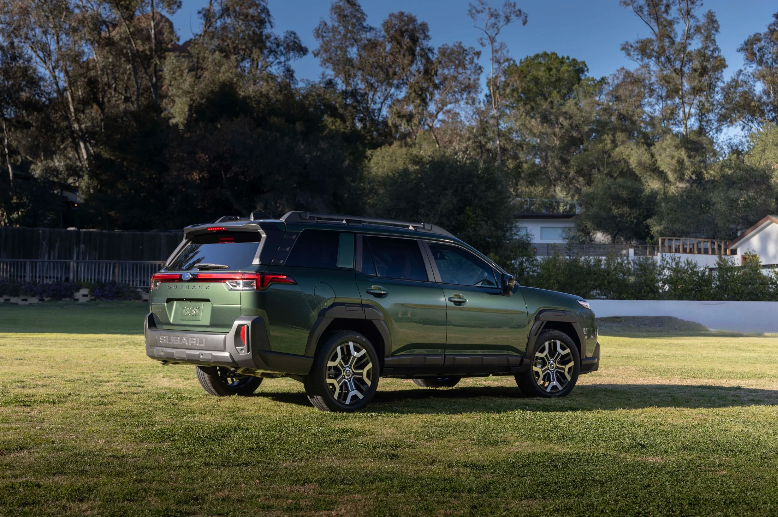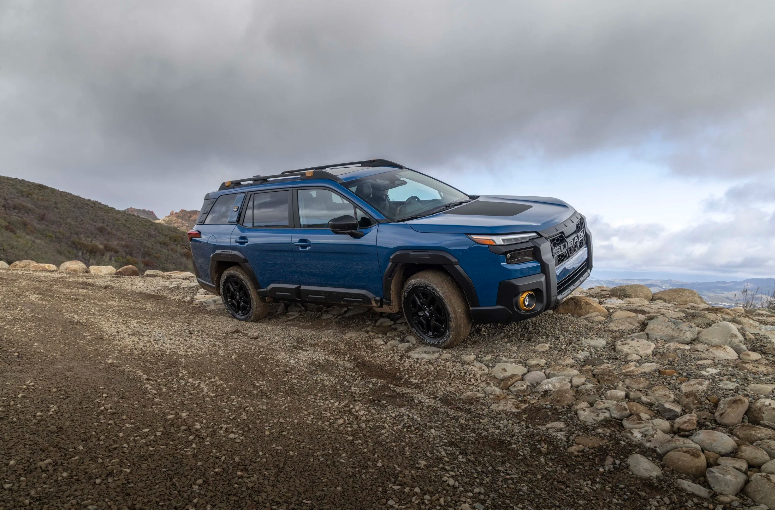LATEST NEWS
Kiwis set to explore Subaru’s Wilderness catalogue?
Richard Bosselman
November 5, 2025
Special edition Forester and Outback being given focus at Japan show raises thought about NZ circulation.
MIGHT much discussed toughened adventure editions of the Subaru Forester and impending new-generation Outback be heading this way at last?
Wilderness versions of the latest generations of those cars - Outback above, Forester below - were surprise inclusions on the company’s stand at the recent national motor show in Japan.
The brand’s head office in Japan has not discounted thought it’s finally sharing those ultimate muck-in models for proper global use.
The derivatives stand out by being brawnier in look than the standard factory styles, and also achieve lifted suspensions even better suited to rough terrain, plus more muck-attuned tyres.
Wilderness editions are well known, but have never been in right hand drive, Subaru preferring to restrict them to North America.
That hasn’t stopped New Zealand’s distributor from seeking both previously, with particular interest in Outback.
Subaru New Zealand’s previous boss, Wal Dumper, and his team were big fans.
The marque’s regional distributor, Inchcape, appears to have the same level of enthusiasm now, going by overseas’ reports.
Intent to include Australia as well is a good signal, given the obvious volume considerations.
NZ already has a current generation Outback Wilderness; it’s a NZ-spec car refitted by one enterprising Manawatu man.
He imported, at no small expense, the entire conversion - comprising not just a specific body kit but also wider tyres, rims and suspension - out of the US.
That example might always be a one-off as the current Outback is about to leave the scene.
The new model - at least for our part of the world, as Subaru put it into North America more than a year ago - is expected to land early next year.
What’s incoming will be easy to spot. After six generations of presenting as an elevated, butched-up station wagon, the Outback has gone to a blockier and bigger sports utility style (below) because it has perceived that is what buyers prefer.
From nose to tail, the next generation is way more squared off than the predecessor still on sale here.
The headlights are split into two spaces on the front, and they bookend a wide U-shaped grille with a large Subaru badge at the centre. Plastic body cladding emphasises the new direction.
Subaru says it’s gone with the boxy look in order to emphasise Outback’s “height and durability.”
The new design ties coherently to the latest Forester. and favours practicality.
Subaru points out the new Outback’s roof rails are built to handle a 100 kilogram dynamic load - that’s enough for bikes, gear, or even a rooftop tent. A more upright rear hatch helps improve both aesthetics and cargo capacity.
The Wilderness car seen at Mobility Japan show in Tokyo last week had the same extras as seen on the US-market car.
This means it achieves heftier looking bumpers, a black grille with 'SUBARU' script, extra body cladding, copper-coloured highlights, hexagonal LED fog lights, and 17-inch wheels with all-terrain tyres.
Wilderness has 20mm more ground clearance - so taking it from 220mm standard to 241mm - and, as result, also sports better off-road angles than the regular Outback delivers.
As much as everything is new with the 2026 Outback, as with Forester, there’s still a load of carryover.
The new body, with a whole new interior, cloaks the current platform and power comes from a familiar choice of 2.5-litre non-turbo or 2.4-litre turbo four-cylinder 'boxer' engines we know now. There’s no sign of it taking the hybrid 2.5-litre that has now become an option for Forester.
Outputs in US models are 134kW/241Nm for the 2.5 and 194kW/376Nm for the turbo engine. In NZ market spec the latter currently produces 183kW/350Nm.
These remain matched to a continuously-variable automatic transmission and the same all-wheel drive.
In addition to the familiar driver aides for on road and off we get now, it adds Emergency Stop Assist technology – capable of bringing the car to a halt on the side of the road if the driver is detected to be incapacitated – and, in US market form but perhaps not for global issue, a semi-autonomous feature for highway driving, at speeds up to 137kmh.
The cabin is still set up for five occupants and delivers a fresh dashboard. The The 11.6-inch portrait touchscreen is gone, and two new displays are fitted – a 12.1-inch infotainment touchscreen and a 12.3-inch digital instrument cluster. Though this is the car’s first step into the digital work, it has more physical buttons than the present type.
Sense the roof height has increased is no illusion; the type gains 51mm of that for more interior space. This also impacts on the boot space, which has grown by a claimed 57 litres to 980 litres. That’s likely measured to the roof.
When Forester launched in July, it became clear that the petrols in that family were lineball priced with the entry and X editions of current Outback, while Forester Touring sat $3k shy of the Outback Touring.
This raised thought of potential for Forester to nab sales off the larger car …. and that the Outback, traditional the brand’s best seller, might increase in price in its new form to regain a spending gap. More could well be known soon.
Subaru used the Tokyo show to put the spotlight on its second electric SUV, the Trailseeker (above), a smaller sibling to the Solterra it has worked to engage Kiwis with.





